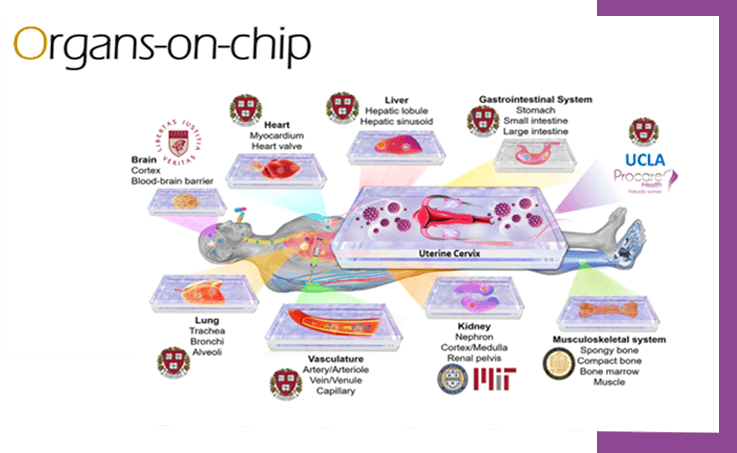Cérvix on a chip
Procare Health
Cérvix on a chipProcare Health
Cérvix on a chip
In collaboration with the Universities of Harvard and UCLA, at Procare Health we are developing a pioneering solution that will allow the development of clinical trials on cervical cancer without animal models.
It is a simple, effective and easy to handle live model that consists of reproduction on a chip and represents an excellent alternative to the classic in vitro models that study the evolution of HPV infection in the cervix.
With Cervix On a Chip, the aim is to increase knowledge about how HPV interacts with healthy and infected cells and to verify how it affects the cervix, since practically the only cause of female cervical cancer is the persistence of this transmission virus sexual.


International participants
Once again, Procare Health is leading an international research project in our country that will allow a deeper understanding of the physiology of women, also taking an important step forward that will make it possible to dispense with animal testing.
Cervix On a Chip is part of Organs-on-chip, an ambitious international project that will bring together the talent of different companies and leading medical institutions with the aim of advancing the study and knowledge of different gynecological diseases
Phases of the Cérvix On a Chip
Phase 1: Design the chip
March 2018 – UCLA, LOS ANGELES, USA
The chip capable of recreating an anatomical zone of the uterine cervix, especially susceptible to infection by the Human Papilloma Virus, called epithelial transformation zone, is designed.
The next step is to cultivate the squamous and glandular epithelial cells on the chip to check if the environment designed within it is correct and thus establish the relevant corrections
Phase 2: Celular cultive
March 2020 – September 2020 – McMASTER – ONTARIO – CANADA
Subsequently, it is checked whether the cells are capable of growing and developing in the artificial environment created on the chip. For this, cell viability, cytotoxicity and MTT tests are carried out, among others.
Finally, it is tested whether the cells are capable of growing and recreating the structure of the transformation zone.
Phase 3: Simulate infection
Scheduled for 2022
To simulate the cellular infection model, HPV is inoculated into the epithelial cells present on the chip. Biological changes in the cells are then examined using biomarkers.
In the model created, treatments such as Papilocare® are used to see biological and cellular improvements in real-time experiments

Danial Khorsandi
Project LeadER
The Cervix On a Chip project is leaderring by Procare Health researcher Danial Khorsandi. A young and promising scientist with a doctorate in biotechnology and biomedicine who has worked in leading laboratories such as Harvard-MIT’s Division of Health science and technology, Boston General Hospital, or the California NanoSystem Institute at UCLA.



